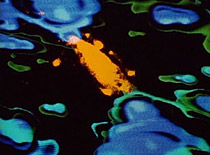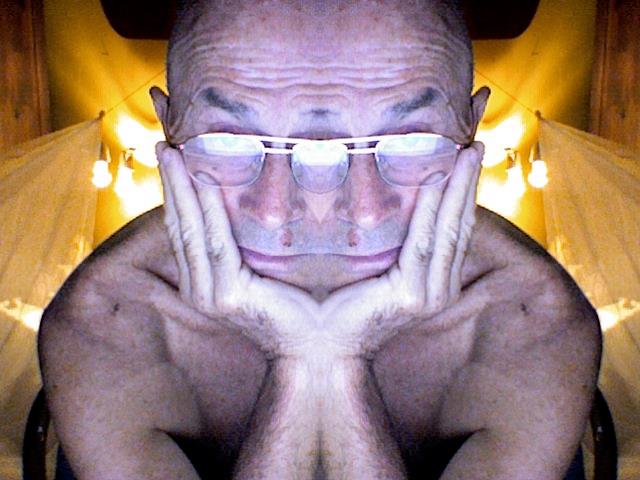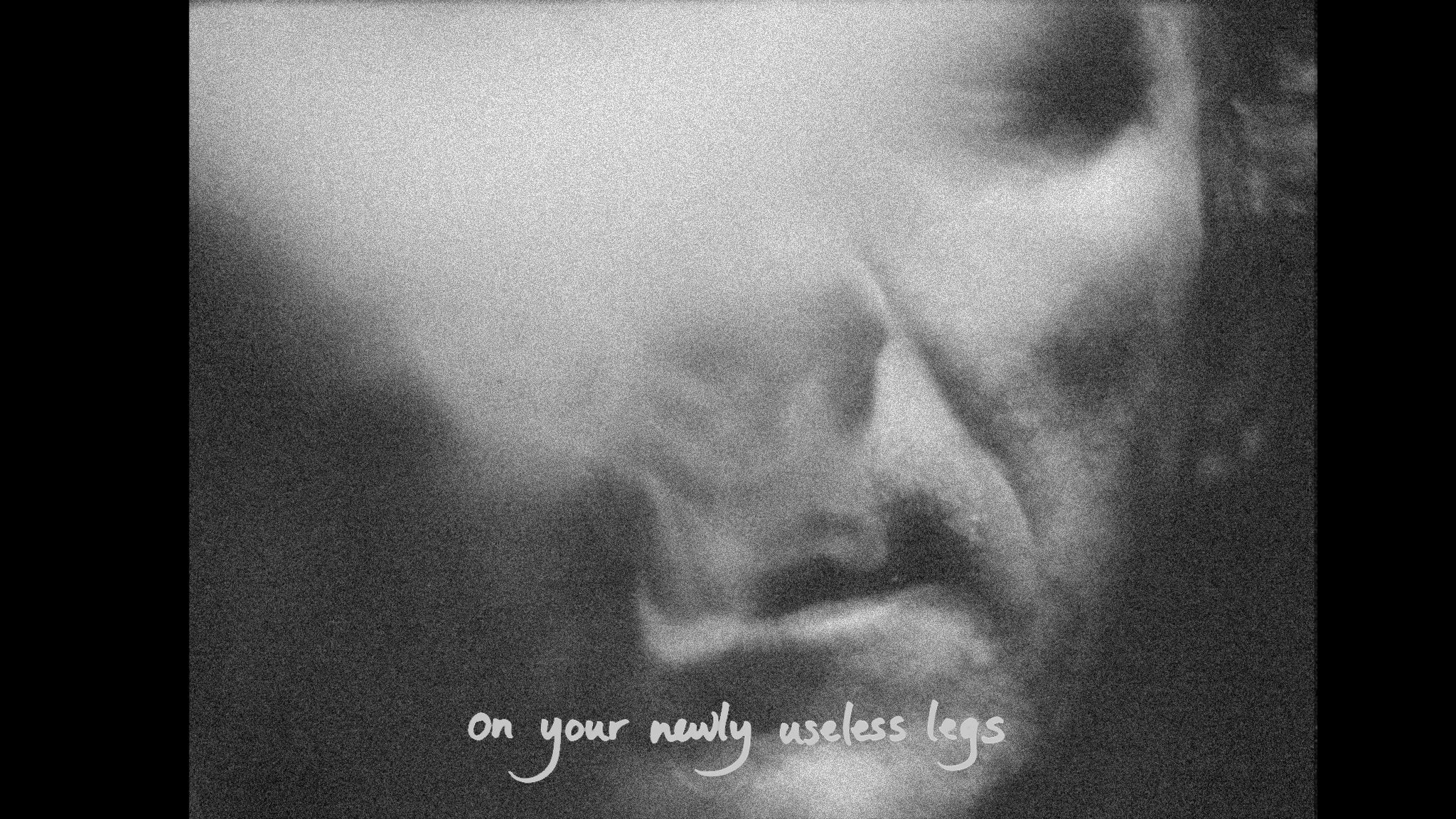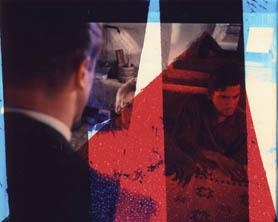Martin Rumsby is a writer and experimental filmmaker. Active for many years in North America, he now lives in New Zealand.
A Composite Conversation Compiled by Martin Rumsby:
In February 2014 Al Razutis and I were chatting on Facebook about avant-garde cinema. The conversation got around to Hollis Frampton, notions of formalist and transgressive cinemas and what had once been perceived as an east/west coast split in the American avant-garde cinema. Being unclear about some of the issues I began inquiring of other avant-garde film people across the continent. The following text is a composite of replies I received on Facebook between February 14 and 18, 2014. This could have been a Facebook thread and like such a thread it took on a life of its own for a few days, before petering out.
Al Razutis, (Vancouver):
Frampton’s work was hardly shown or seen (on the west coast during the 1960s). The separation between the east coast and the west coast was very broad, and out here the ‘academic’ and ‘philosophical’ stuff was later imported into university and curatorial practice… Transgression on the west coast was seen as a ‘given’… Not until the late 1970s or 1980s did it become institutionalized.[1]
Martin Rumsby, (Auckland):
You are talking about the scene around San Francisco?
Razutis:
Basically, I started off making films in California, 1967. Showed underground films in California, saw a lot of work in San Francisco then went to Canada where I kept making and showing films. That’s where I met Dave Rimmer and Gary Lee Nova and the rest of the Intermedia[2] gang. As for LA, it has always been another ‘home town’; I’ve come and gone from there throughout my life. I showed films in Davis, CA, San Diego and, of course, Vancouver – by showing I mean I ran an underground cinema.
Rumsby:
Did you ever come across a film and video maker named Byron Black? I’ve heard of him in Osaka, the Philippines, Bangkok and Jakarta. Never seen his work though. He’s a phantom.
Razutis:
I knew Byron Black a.k.a the Baron of Infinity in Vancouver in the 1970s. He was a film, performance and video artist. His work was ‘outrageous,’ fun, and always interesting. He came from Texas. He pulled up stakes and left for the Orient.
Rumsby:
Exiles and expatriates can be difficult to categorize. I wonder if he is still alive. He would be in his seventies now.
Razutis:
The Vancouver interest in avant-garde and underground cinema preceded my arrival (there)… From my shows at Intermedia the Vancouver interest continued with the creation of the Pacific Cinematheque.
We had everything from psychedelic to anti-war rants to silents to personals… hardly any east coast… except for Warhol. Some animations, some political films… nobody cared about ‘geography.’ I remember John Luther-Scofill organizing the Berkeley underground film shows… huge audiences and great programming… Anger showed his films on acid, poured coffee on his head… Brakhage’s films (birth, death) caused people to faint… plus Canyon Cinema.
Rumsby:
I came across Scofill[3] in the late 1980s, running the Experimental Film Coalition in Chicago. Great screenings, unusually diverse programming. How about Warhol? What was his effect on the west coast?
Razutis:
Warhol came to Vancouver before I got there, but it was for an art gallery gig… none of (his) films had any real bearing on what was produced in Vancouver during the 1960s and 1970s.
The New York films were only available from Filmmakers in New York… We were unaware of ‘canons’ of great work… programming, showing and making films was all about what one personally liked.
When underground and experimental film began to be shown in galleries, I felt that was the end of the underground.
Rumsby:
The formation of Canyon Cinema and San Francisco Cinematheque by the likes of Bruce Baillie and Chick Strand would suggest a degree of organization.
Morgan Fisher, (Los Angeles):
I would not have thought transgressive and formalist, as I understand those words, are opposites or mutually exclusive. A further complication is that to the extent one can generalize there is a pronounced difference between filmmaking in San Francisco and that in Los Angeles, the first perhaps more homogenous than the second.
I knew Hollis’ work from the late 1960s when I was at Cambridge, Massachusetts, and continued to follow it when I returned to California in 1969. I’m pretty sure I was not the only person on the west coast who knew the work, but I don’t know how widely it was shown here.”
Steve Anker, (Los Angeles):
Frampton appeared in San Francisco and Berkeley several times during the seventies, often for several days.
Janis Crystal Lipzin, (Northern California):
I recall Hollis making some cryptic remarks about the East Coast/West Coast split in the 70s – how east coast filmmakers were afraid of coming to the west coast for fear of the negative reception they might receive.
Rumsby:
It is as if there are even differences between art scenes along the west coast as the books radical LIGHT and The Most Typical Avant-Garde, about San Francisco and Los Angeles respectively, would indicate. Not to mention Chicago in the mid-west, a whole other scene altogether.
Lita Barrie, (Los Angeles):
The big talents in LA are hermits.
Lipzin:
One East Coast/West Coast split that seemed most often articulated in the ‘debate… centered around the deep investigation of the personal, often called ‘self expression’ which characterized much of (the) work of prominent west coast filmmakers in the 70s, such as Scott Bartlett[4], Bruce Baillie[5], Gunvor[6] and Robert Nelson[7] and Larry Jordan[8].
(This) contrasted with the notion that Hollis articulated: that he preferred to keep himself out of his films. I recall him saying at a San Francisco Cinematheque screening in the 70s that his films are much better than he is because you get all the good stuff in the work.
Rumsby:
I get the idea that he sometimes managed to work himself into his work.
Lipzin:
Well, certainly Nostalgia (1971) is a kind of visual suicide note. I think he also felt that, like communication, expressing yourself is inevitable and that in some sense or other, some work will be an autobiographical work. But I recall his saying that one’s own life is as good material as any other. Whereas, many of the west coast artists of the era expressed the notion that the more deeply personal their work the more universal the communicative potential it had.
Saul Levine, (Boston):
I’m not quite sure I agree with that (East/West split). I lived in San Francisco in 1967 and many west coast filmmakers objected to my work for being transgressive and formalist. They prided themselves on being technically adept, psychedelic, beautiful, and humorous, as opposed to me as typically New York. Weirdly, they also saw Brakhage as New York. I don’t remember seeing Frampton there.
About Boston, whose history is unknown or unwritten, Bruce Conner made Report (1963-67) and Vivian (1964) there… I think the east coast west coast binary is a fiction… there is similar fiction in Chicago. I think Boston has been transgressive and formalist… I always think of the American avant-garde as a national movement, not bound to any city.
Rumsby:
Besides Conner, visiting artists such as Nam June Paik, Bill Viola and William Wegman all created work in Boston. Were Joe Gibbons[9], Luther Price[10] or Robert Gardner[11] associated with the scene in Boston?
Levine:
Both Joe and Luther have been active members of the Boston scene. Robert Gardner… has mainly been associated with documentary and ethnographic films. That being said he has a long off again on again association with many of the major… figures like Sidney Peterson and Stan Brakhage. He did a late night TV show that included such figures.
Rumsby:
There is also a film artist named Richard Bartlett (1922 – 1994) who lived in the Boston area in the late 1960s. He is now pretty much forgotten. I saw his film Bitter Grapes (18 minutes, 1968) in Ontario in the early 1980s. An unforgettable, anarchic work, which is cited by Amos Vogel in the book Film as a Subversive Art. Bartlett depicts a bulimic orgy, the protagonist eating until semi-comatose then being awakened by a nun and vomiting all he has eaten.
Vogel tells us, “Constant, nervous jump cuts and concomitant jumps from medium to close shots intensify the action. The end is serene; in a meadow, the ‘nun’ removes the subservient man’s last undergarment and sets him free to wander from us, a new born babe, in a cleansing of body and soul[12].”
I have also heard of a French Canadian film artist, Louise Borque, working in Boston. I believe she reworks found footage to address psychological, societal, and women’s themes.
Mike Zyrd, (Toronto):
There was an east coast west coast split but less along transgressive lines (both coasts were that) than the east coast developing a formalism that borrowed concepts and minimalist tendencies from NYC while the west coast skewed expressive, and sometimes vaguely Eastern spirituality.
Rumsby:
The Isaacs Gallery in Toronto sponsored poetry readings, film screenings and jazz performances in the mid 1960s. Isaacs was connected to the New York scene and organized screenings of films by Michael Snow, Joyce Weiland, Jack Chambers and Jonas Mekas. There was also a large-scale Expanded Cinema event in Toronto in the late 1960s. Now there is Cinecycle.[13]
Working at an entirely different level from Snow and Weiland, John Porter has, since 1968, made over 300 films on Super 8mm, Regular 8mm and 16mm formats as well as staging over 500 screenings and performances since 1971. He has also shot more than one thousand documentary photographs of film artists and events over the past 35 years.
Patrick Friel, (Chicago):
Chicago seems to have always been a ‘passing-through’ town or a starting place for younger artists who then move on. The work seems to be a mishmash of styles and influences- formalist stuff, diary work… Tom Palazzolo,[14] political/feminist work, lots of documentary stuff (Chicago Newsreel) and more.
Josh B Mabe, (Chicago):
Since I’ve been here it’s been super strong – but in waves. And waves generally come from distant places. When I moved here 7 years ago the crowd was from Milwaukee. Then from Pittsburg. Now we have some strong Boston folks. There was a strong group from Florida too… Chicago is the perfect incubator. You can be broke here and live decently easy. The city doesn’t beat you up too much and gives you lots of chances.
Rumsby:
Right, I recall both Barbara Hammer and Vincent Grenier being around there for a while. Not to mention Brakhage’s regular train trips from Denver when he was teaching at the School of the Art Institute of Chicago. Peter Kubelka also taught there.
There are names, Howard Alk, Bill Stamets, Jeff Kreines[15], Heather McAdams[16], Dan Eisenberg[17], Allen Ross[18]. I remember seeing some films by Barbara Scharres in the 1980s. Fred Camper made films. There was a German woman film artist, Ulrike Reichold, made quite nice work. More recently, Ben Russell was around Chicago for a while. Jake Barningham moved to the Czech Republic and Yoel Meranda to Istanbul. Kyle Canterbury’s work is interesting.
Gregg Biermann, (New York):
Many filmmakers are working with similar ideas and techniques… Certain filmmakers remain local to their communities and others transcend that.
Rumsby:
Whether it’s film in the video era or film in the digital era or even painting and cinema, film is still in there. It’s the qualifiers that change. There’s something lurking there. Not sure what it is. Maybe that cinema is a living thing. Artists continue working in this medium and in this tradition. The artists are still engaging. And there are people who look at the work, engage with it and think and talk about it. Where do they fit in?
Mike Hoolboom, (Toronto):
I wonder what you mean when you use the word ‘tradition.’ It raises a lot of interesting questions/conundrums. Because I’m an old man now, I see a lot of what I feel is pretty old fashioned, pretty ‘traditional’ sorts of work made, filled with traffic signs of the avant-garde. You know: flicker, grain, formalist dress rehearsals. I feel they are genre copies, though they are replaying moments of what at least some people refer to as ‘the tradition’, which are absolutely singular. Isn’t the point, if there is a point, to have each person see in her or his own way? And this singular seeing may be considered part of a chained liberation struggle that draws together eco-feminists, feminists, black power, criminal rights workers, etc. This is how I understand the ‘tradition’ you are speaking of, fringe movies – as places of resistance. But much avant-gardism today is not a place of resistance at all, though this is part of a larger (i.e. larger than a single artist and their work) systemic problem.
Steven Woloshen (Montreal):
If we talk of traditions, recently I began working on restoring Canada’s film archives at Montreal’s NFB. I began to tap into some of the reasons we hand paint film. Everyday, I identify the films with a permanent marker. Seventy-five years ago I would have done the ID in India Ink. It began with identification and spun out into style. Cinema begins as a material experience (holding, cutting, writing) then the dialectical process begins.
Rumsby:
The free ranging west coast scene of the late 1960s that Al describes is quite different from visual artists, like Michael Snow and Andy Warhol, who made experimental films and were promoted by dealer galleries. Bruce Conner is an interesting exception, a visual artist who made experimental films but really unhappy with the dealer gallery scene. Conner finally arrived at a point where he had a rubber stamp made of his signature. He used the stamp to sign his artworks with. His dealer didn’t like that. That is one reason why Conner is not so well known as a visual artist.
There is another tradition I sometimes think of. This is related to Len Lye’s ‘old brain’ thinking, of tapping into a universal consciousness (the universe for Frampton being medium specificity), such as that of the communal Polynesian societies that he would have experienced as a young man. Here, art is thought of as communal – as in the overall abstract patterns of tapa[19] in which innovation may be stated in gentle inflections. It’s a cultural thing, a whole different politics. A place where the western idea of authorship becomes something quite different. Where we are all part of a larger work, a pattern, to which we all contribute. A pattern much larger than ourselves that can encompass all of us, as individuals and communities.
Hoolboom:
I think the question underlying this conversation has been, what kind of conversations do we want to have? I think we have some idea of what the conversations used to be about in the world of fringe movies, but what about now, what is relevant today? In today’s practice, in the light of what has gone before, but needing to find practices that are applicable to today’s situations.
[1] Terry Eagleton argues that, “No way of life in history has been more in love with transgression and transformation, more enamoured of the hybrid and the pluralistic, than capitalism. In its ruthlessly instrumental logic, it has no time for the idea of nature – for that whose whole existence consists simply in fulfilling and unfolding itself, purely for its own sake and without any thought of a good.” Terry Eagleton. After Theory. New York. Basic Books. 2003.
[2] www.michaeldecourcy.com/intermedia/blog.htm
[3] John Luther-Scofill also made experimental films including, Die (1966), Fimpiece for Sunshine (1966-68), XFILM (1966-68), and Portrait of the Poet James Broughton, Part One (1974-80). He was written about as a film artist of potential by P Adams Sitney in an article Underground Movies Are Alive Along the Pacific in, The Village Voice, December 5, 1969. Cited in Anker, Geritz, Seid, radical LIGHT: Alternative Film and Video in the San Francisco Bay Area, 1945-2000. Berkeley, University of California Press, 2010. p174
[4] Scott Bartlett (1943-1990), made experimental and erotic films as well as film loops for West Coast light shows. His film OffOn (1967), made up from his film loops, was the first ‘electrovideographic jam.’ “Bartlett’s romantic, West Coast cool sensibility clashed with the then prevailing New York ‘structuralist’ school … OffOn demolished the artificial boundaries between film and video, and set off a wave of similar works that fused video, then an emerging medium, with the filmic image.” – Wheeler Winston Dixon, OffOn: The Film that Changed the Language of Cinema. Accessed at cinespot.com/2013/11/offon-film-changed-language-cinema/ March 30, 2014 Bartlett’s other films which included, Moon 1969 (1969), Serpent (1971), Medina (1972), Metanomen (1966), Lovemaking (1970) were much admired by Francis Ford Coppola and George Lucas.
[5] Bruce Baillie. ‘Film artist Bruce Baillie has committed his whole life to creating a more peaceful world through his art.’ Statement accessed at www.brucebaillie.com March 30, 2014. Baillie’s films include, The P-38 Pilot (1990), Roslyn Romance (1977), Quick Billy (1971), Castro Street (1966), Mass for the Dakota Sioux (1964), and many others.
[6] Gunvor Nelson was born in Stockholm Sweden in 1931 and began making experimental films in the 1960s, mostly in the United States, where she lived until 1992, before moving back to Sweden. “I have made both surrealistic and expressionistic films, but I prefer the term ‘personal film.’ That is what it is about.” – Gunvor Nelson, Wikipedia en.wikipedia.org/wiki/Gunvor Nelson Accessed March 30, 2014.
[7] Robert Nelson (1930-2012) was an almost archetypal post-Beat film-maker. His irreverent, off-beat work made sometimes in collaboration with Steve Reich, Bruce Nauman, the Grateful Dead, William T Wiley and others were among the most popular underground films of the 1960s. These included, Hauling Toto Big (1997), Curious Native Customs (1989), Deep Westurn (1974), Worldly Woman (1973), Bleu Shut (1970), The Off Handed Jape (1967), Oh Dem Watermelons (1965), King Udu (1963) and others.
[8] Larry Jordan a.k.a Lawrence Jordan began making films in 1952. Best known for his animated work he has produced over 50 experimental animation films as well as three dramatic features. A childhood friend of Stan Brakhage, Jordan moved to San Francisco in the 1950s and became involved in the art scene there. His recent films include, After the Circus (2013), Entr’acte (2013), Solar Sight I,II, & III (2011-2013), The Miracle of Don Christobal (2008), Poet’s Dream (2005), Enid’s Idyll (2004) amongst others..
[9] Joe Gibbons is known for low-gauge ‘edgy’ work in which he ‘researches’ life, sometimes as a sociopath named ‘Joe’ who creepily explores aspects of contemporary life. He has at times collaborated with Emily Breer, Tony Oursler and Karen Finlay. Gibbon’s work includes, Confessions of a Sociopath (2005), The Genius (1993), Toxic Detox (1992), On Our Own (1989), Living in the World Parts One-Three (1985), Spying (1981) and more. Gibbons now lives in New York.
[10] Luther Price’s hand-made found footage films create an “oppressive intensity, envisioning an alienated world of often mindlessly repeated rituals and poses that entrap and suffocate his subjects.” -Gary Morris, Home Movies From Hell in, Bright Lights Film Journal. Accessed at www.brightlightsfilm.com March 31, 2014. Price’s film include, The Biscott Series (2004-2008), The Inkblot Film Series (begun 2006), Run (1994), Bottle Can (1993), Clown (1991) and others.
[11] Ethnographic filmmaker Robert Gardner (1925-2014) cinematically explored communities in East Africa, New Guinea, the Pacific Northwest and India since 1951. His most famous films are Dead Birds (1964), The Nuer (1971) and Forest of Bliss (1986).
[12] Amos Vogel: Taboo and the Outrageous in, Village Voice, January 25, 1974.
[13] www.super8porter.ca/CineCycle.htm
[14] Tom Palazzolo a.k.a Tommy Chicago born in 1937 in St Louis, Missouri has made at least 50 films since 1965. From early on he developed a verite style of filmmaking, sometimes in collaboration with Jeff Kreines and Mark Rance. Much of his work focuses on working class Chicago. One series of his films concentrated on the rituals surrounding marriage, prom night, bachelor parties, weddings, wedding showers, receptions and anniversaries. “While Tom Palazzolo’s films feature distinctively Chicago imagery and subjects they move beyond purely regional concerns to embrace archetypal ideas about American history, civil rights and personal and political expression. They depict the spectrum of human experience.” – Kelly Shindler, Curatorial Statement. Chicago-Scope: The Films of Tom Palazzolo, 1967-1976. www.artic.edu/exhibition/palazzolo Accesssed March 31, 2014. Palozzolo’s films include, Down Clark Street (2000), Chicago Nazis (1990), At Maxwell Street (1984), Caligari’s Cure (1983), Marquette Park I & II (1976 & 1978), Jerry’s Deli (1974), Theorist Room (1970), and Tattooed Lady of Riverview (1967).
[15] Jeff Kreines and Joel Demott mastered an unobtrusive style of shooting social documentaries. They most famously utilized this style in Seventeen (1982), an intimate depiction of American adolescence. The completed film was rejected for broadcast by the PBS television network, which had originally commissioned it.
[16] Heather McAdam’s autobiographical comic strips feature in the American alternative press. Her films include, Jay Elvis (1991), Meet … Bradley Harrison Picklesimer (1988), Better Be Careful (1986), Holiday Magic (1985), We Hope You Enjoy This Film (1979) and more.
[17] Dan Eisenberg’s experimental documentaries explore relationships between past, present and future. “History, memory, trauma, contemporary urban environments, and their manifold representations, as well as an extreme consciousness of media and its effects, are consistent themes throughout my work.” – Dan Eisenberg, Artist Statement www.daneisenberg.com Accessed March 30, 2014 Eisenberg’s films include, Something More Than Night (2003), Persistence (1997), Cooperation of Parts (1987), Displaced Person (1981), Matrice (1975) and others.
[18] Allen Ross (1953-1995). A founder of Chicago Filmmakers, Ross made intensely personal, at times off-beat films. His most widely acclaimed work was The Grandfather Trilogy (1981). In November, 1995, Ross was murdered in Cheyenne, Wyoming in mysterious circumstances. Prosecutors believed that his wife Linda Greene committed the murder but she was never charged.
[19] Tapa –tree bark beaten into cloth and onto which abstract patterns are applied. Parts of this process are often undertaken as communal activities.





Very informative read. I am very happy to have located this site after wasting 5 hours surfing the web this evening. This is what I was browsing for.
Greetings from Florida! I’m bored at work so I decided to browse your blog on my iphone during my lunch break. I really like the knowledge you provide here and can’t wait to take a look when I get back to my place.